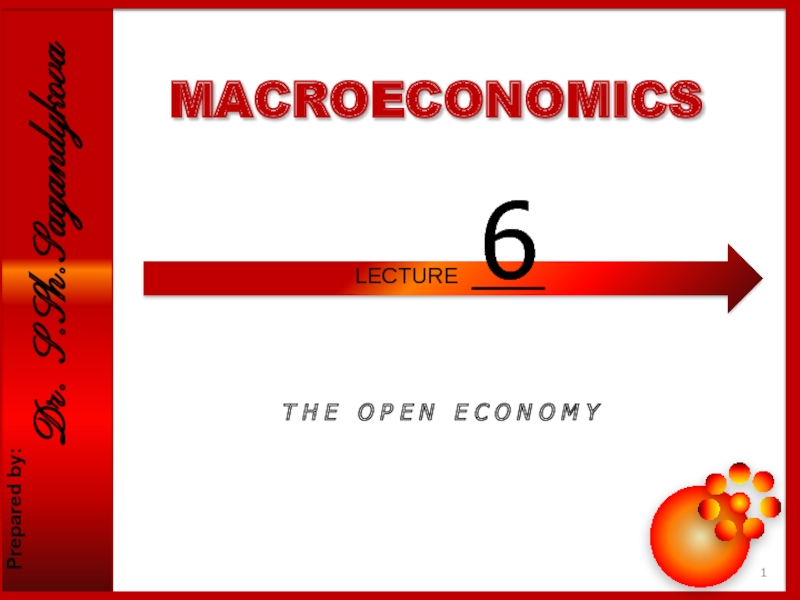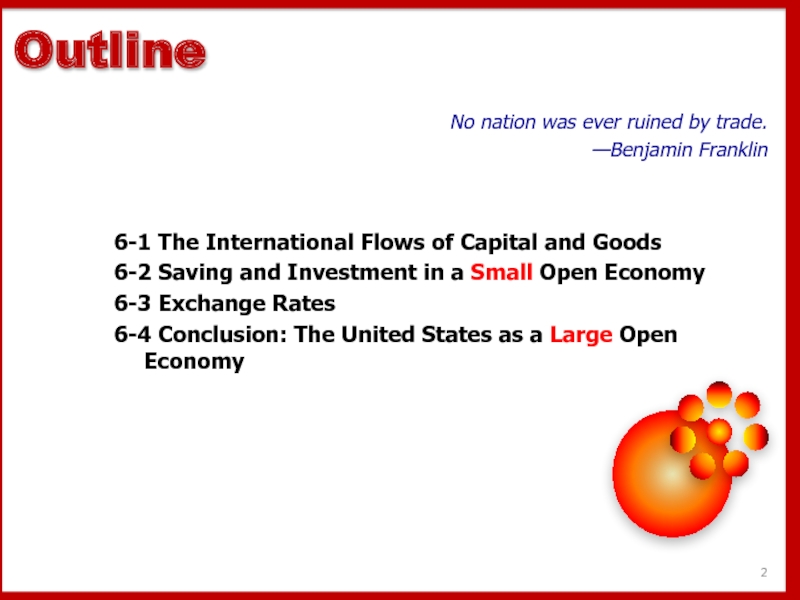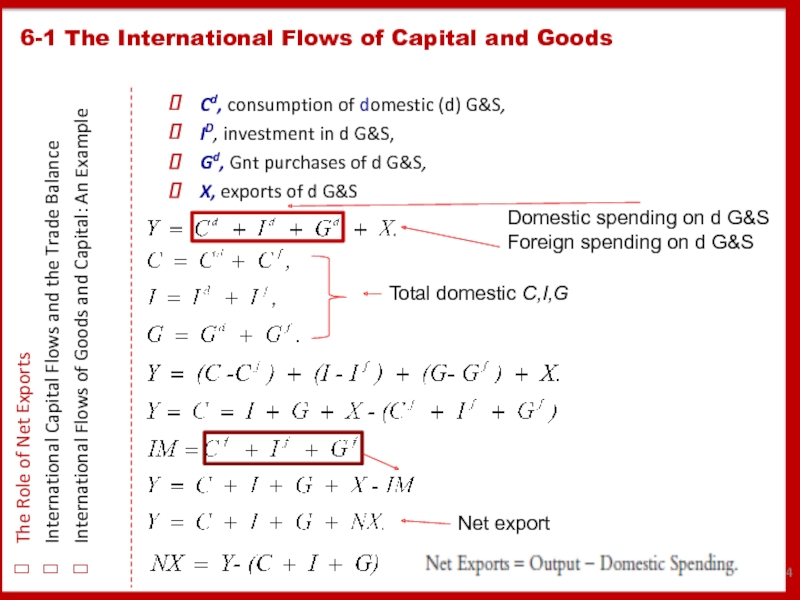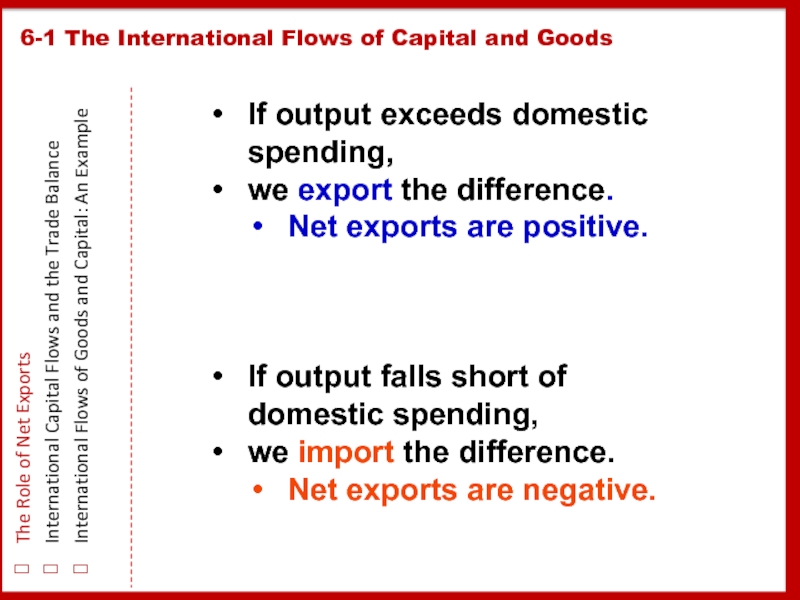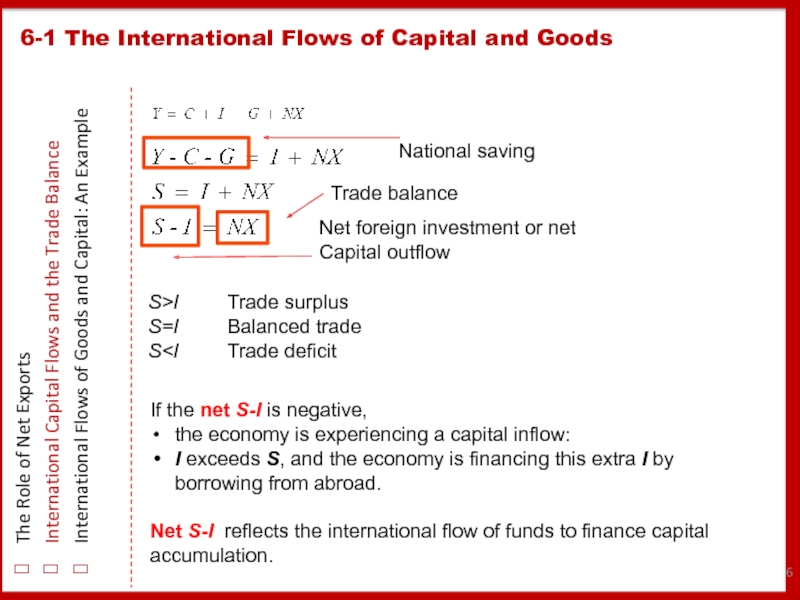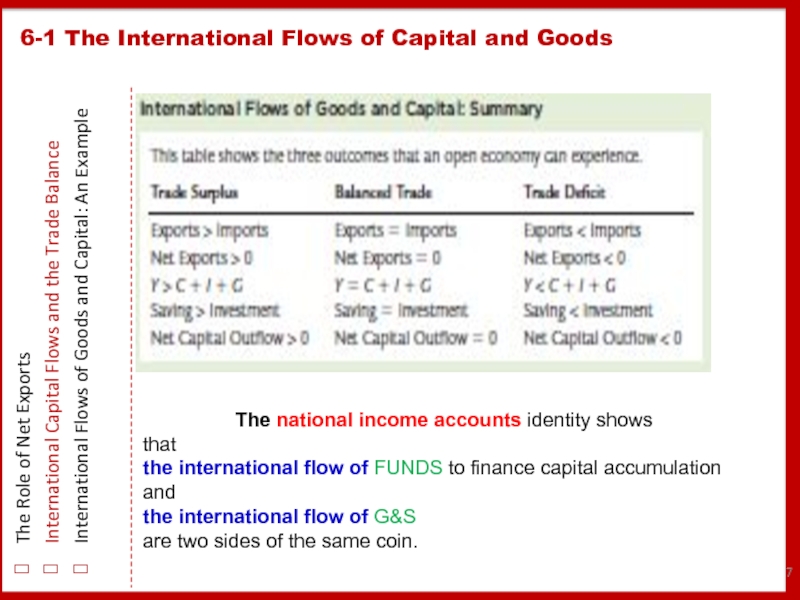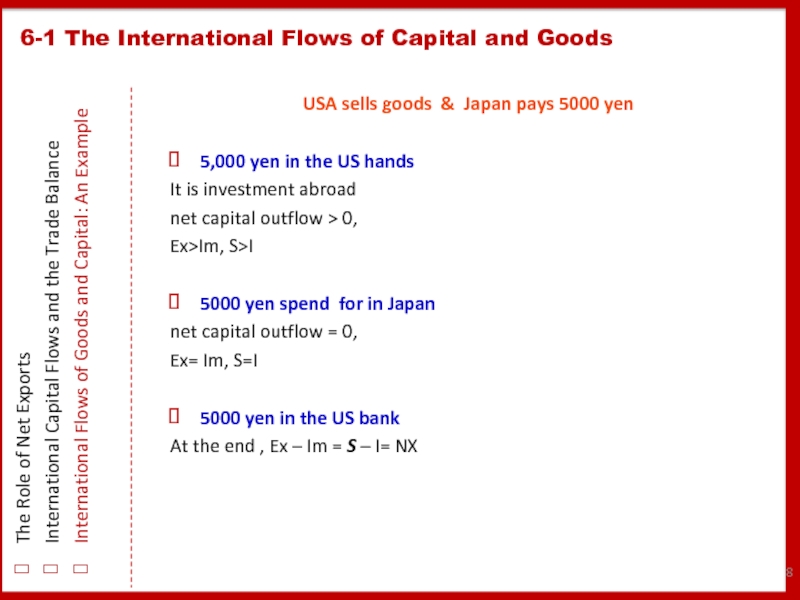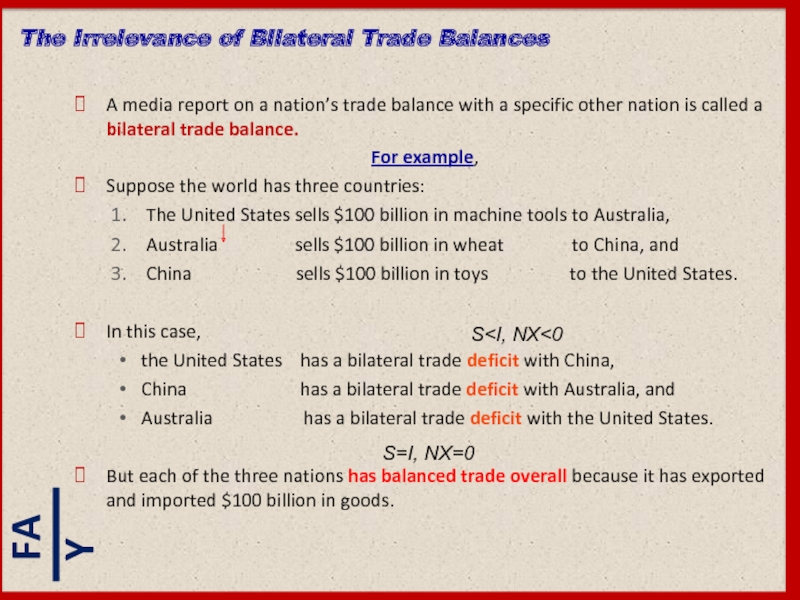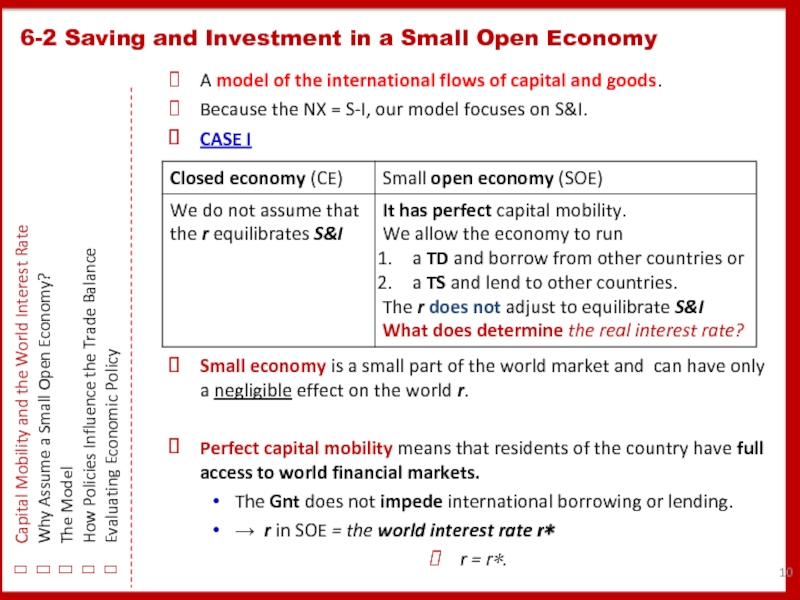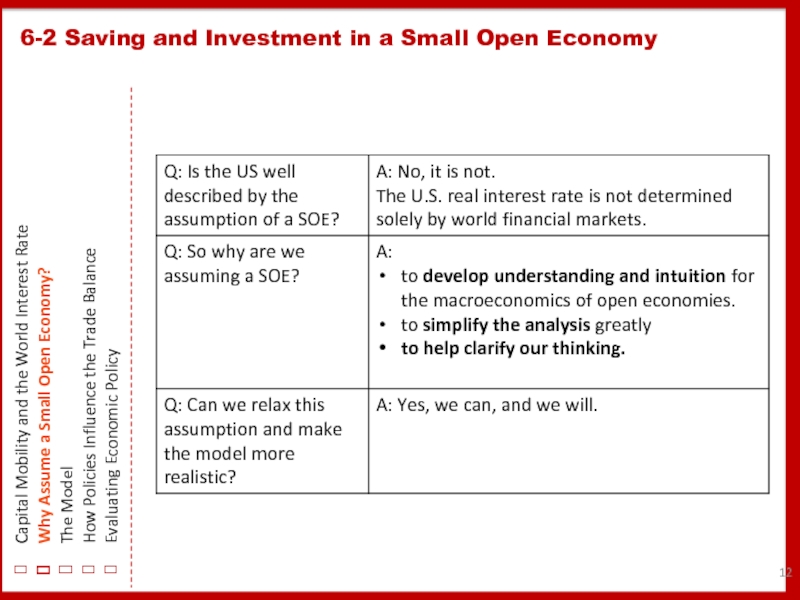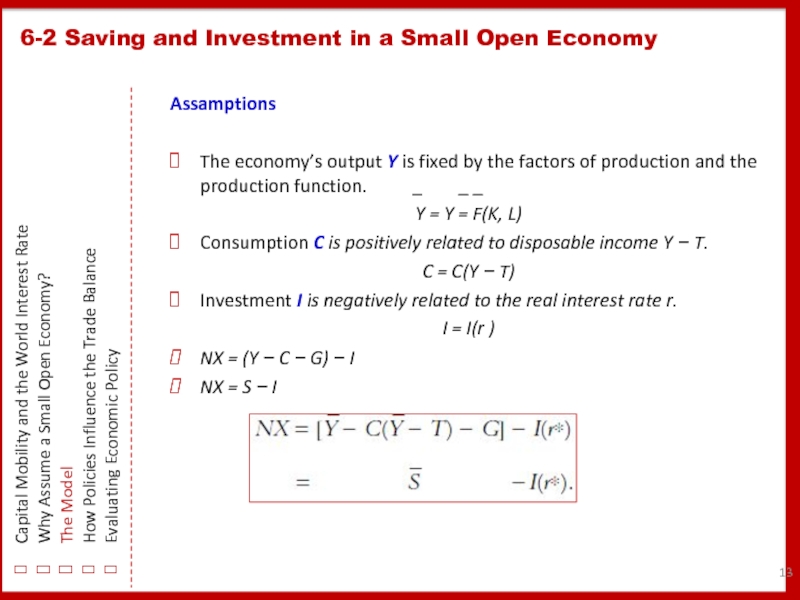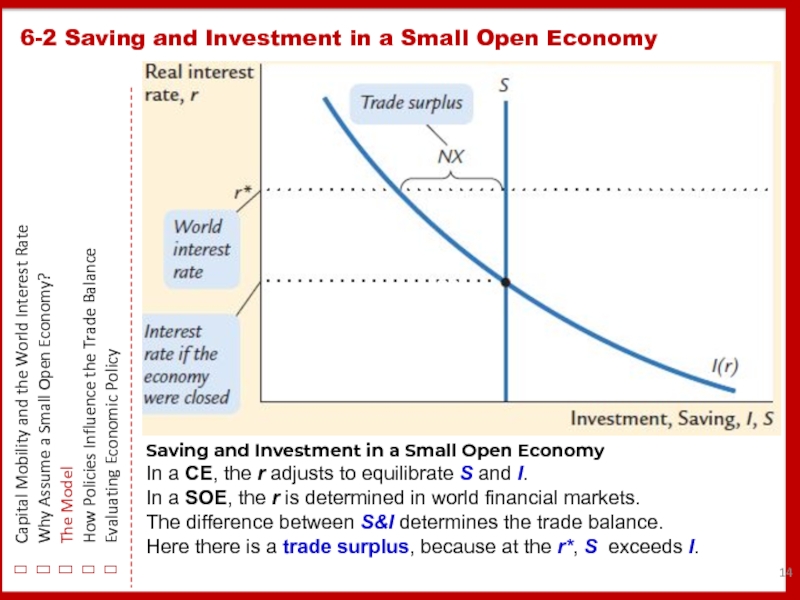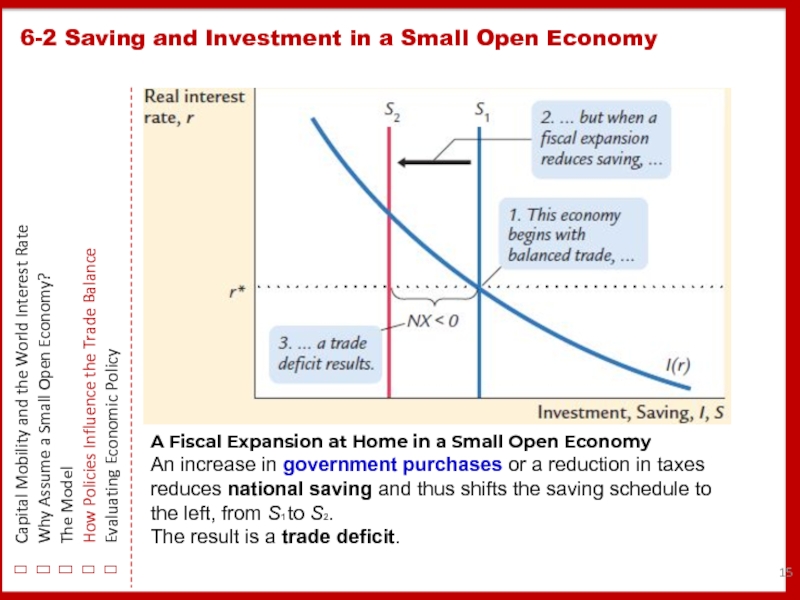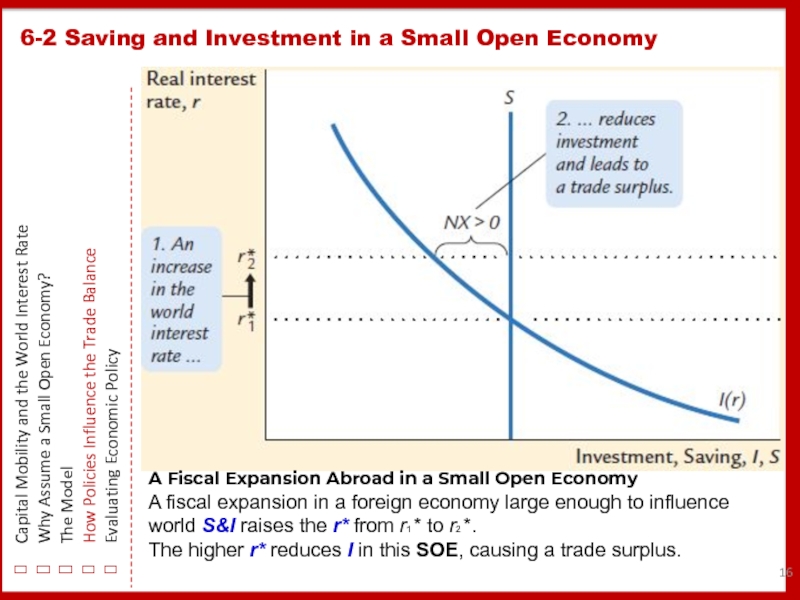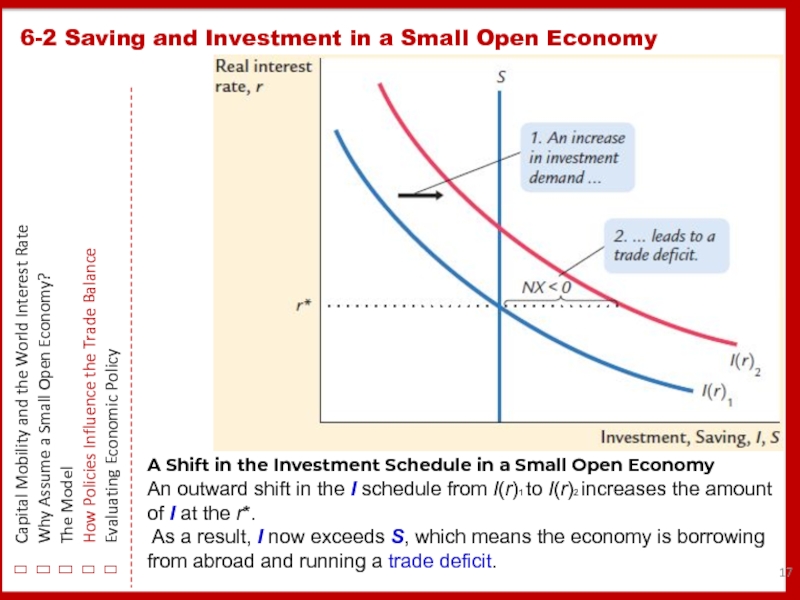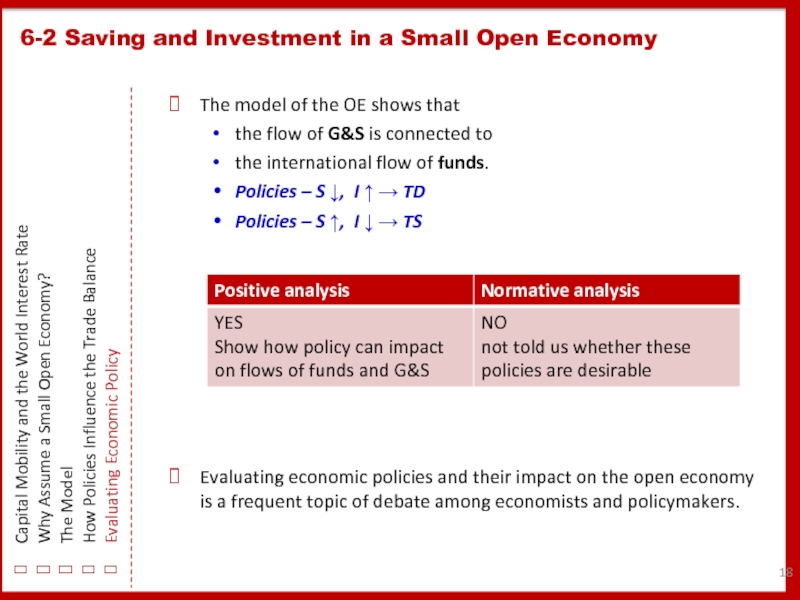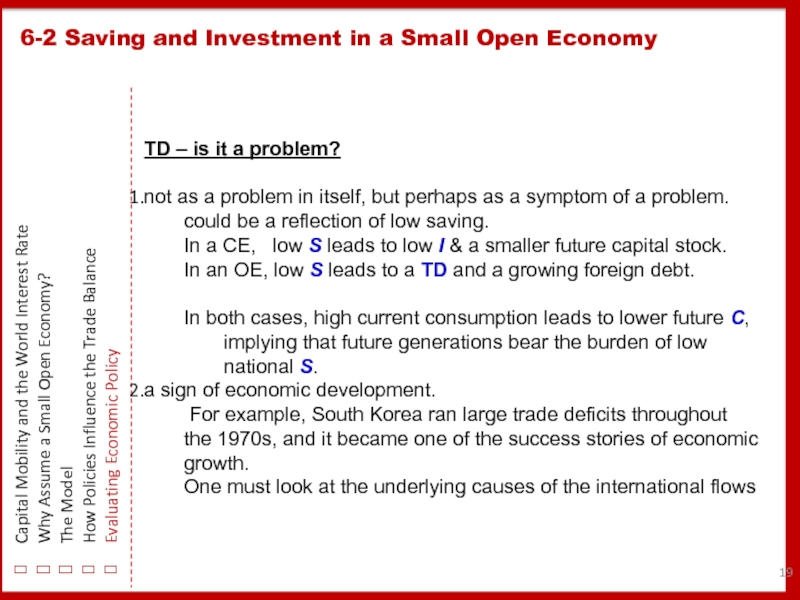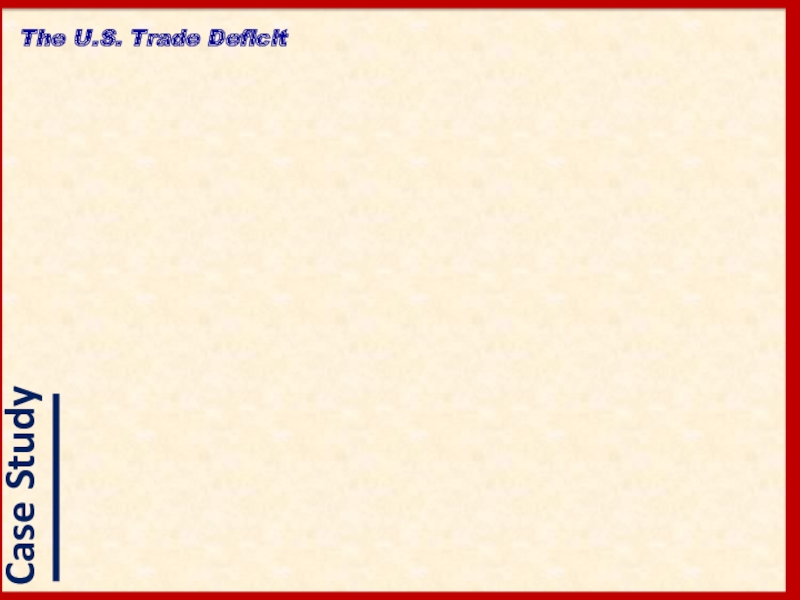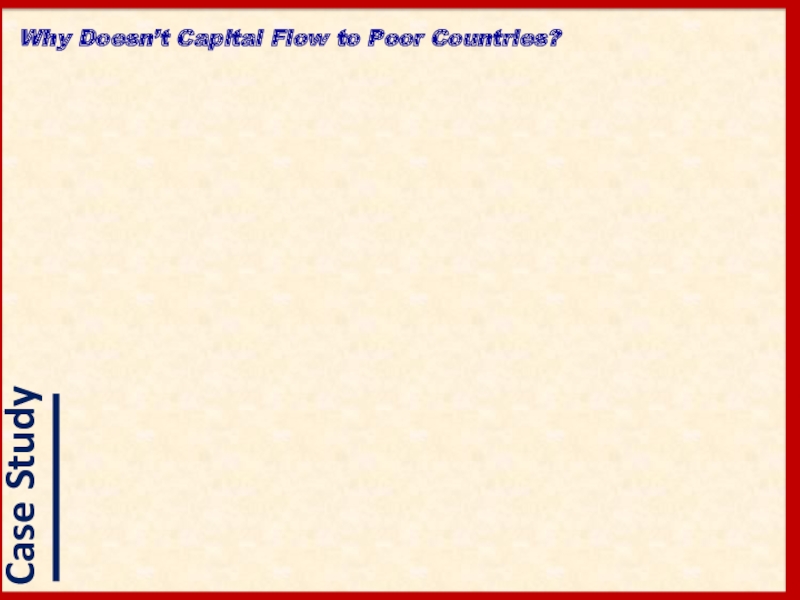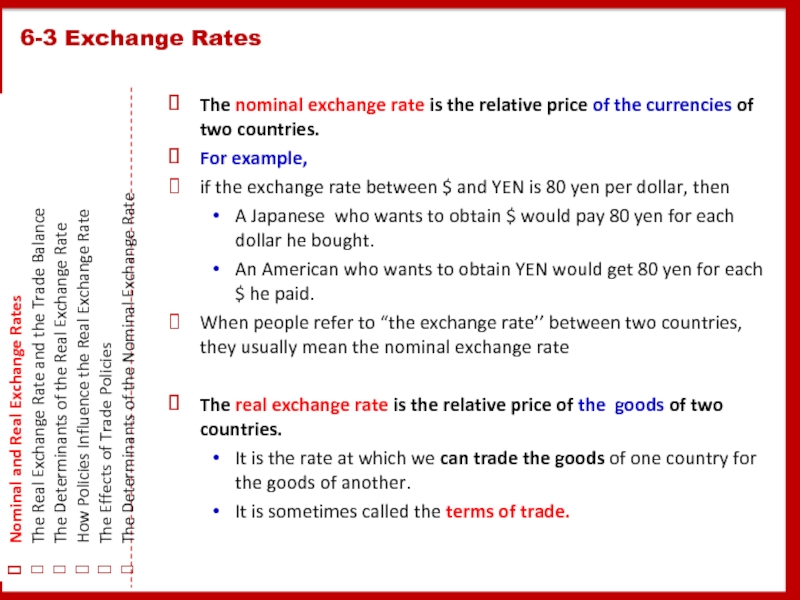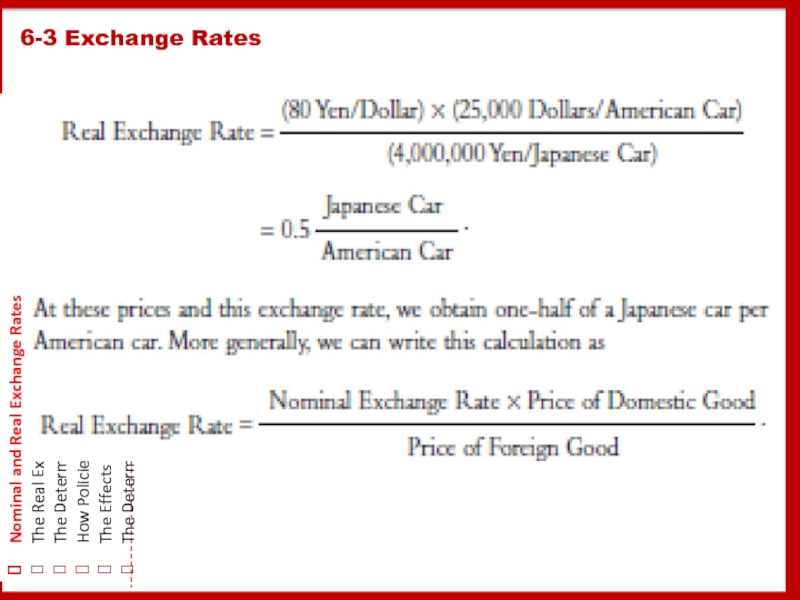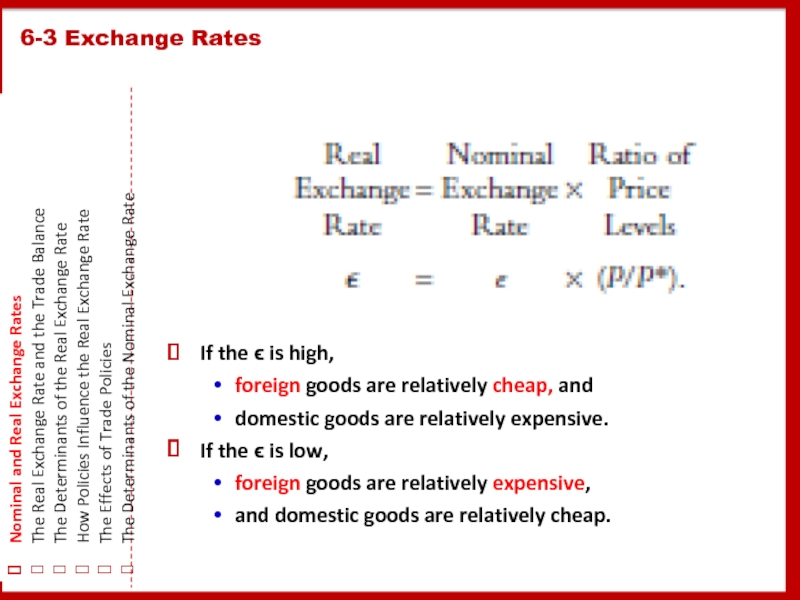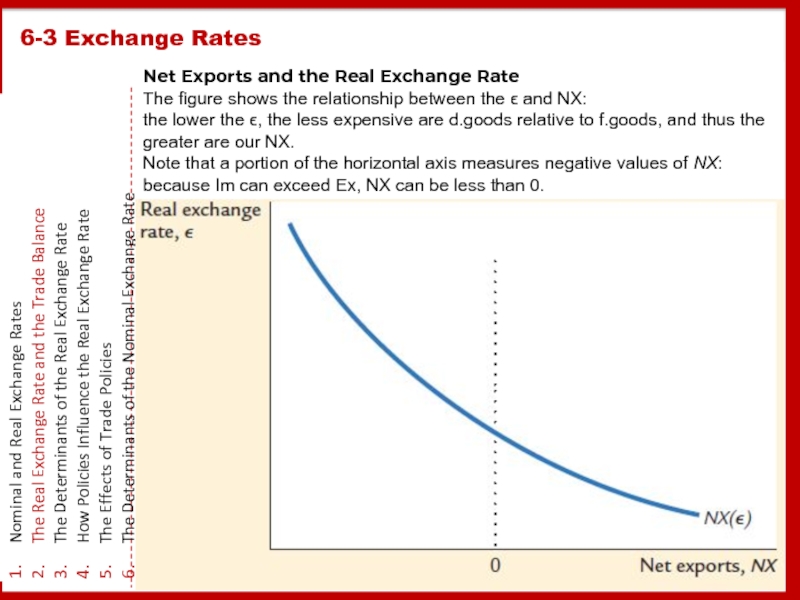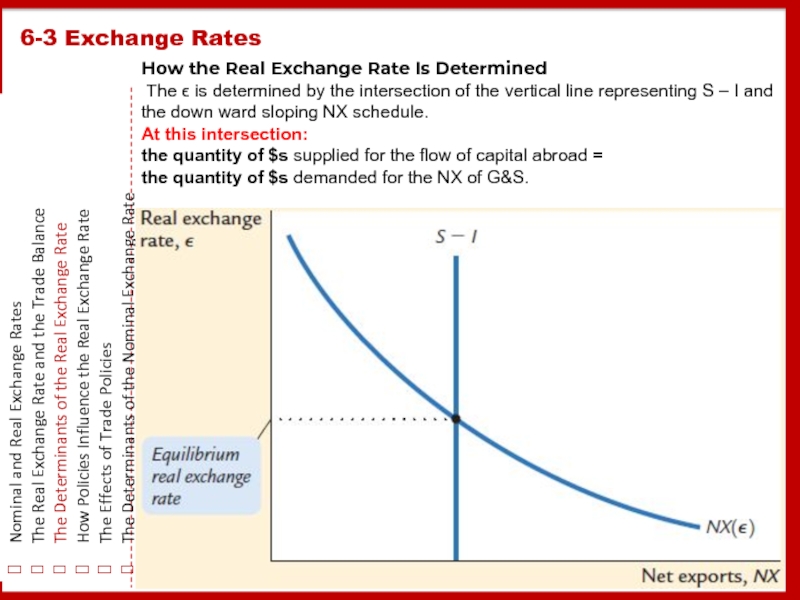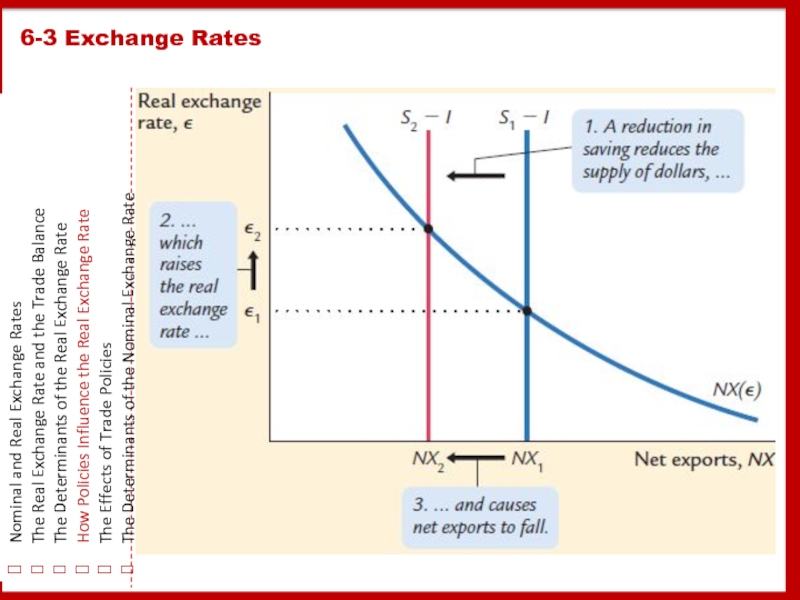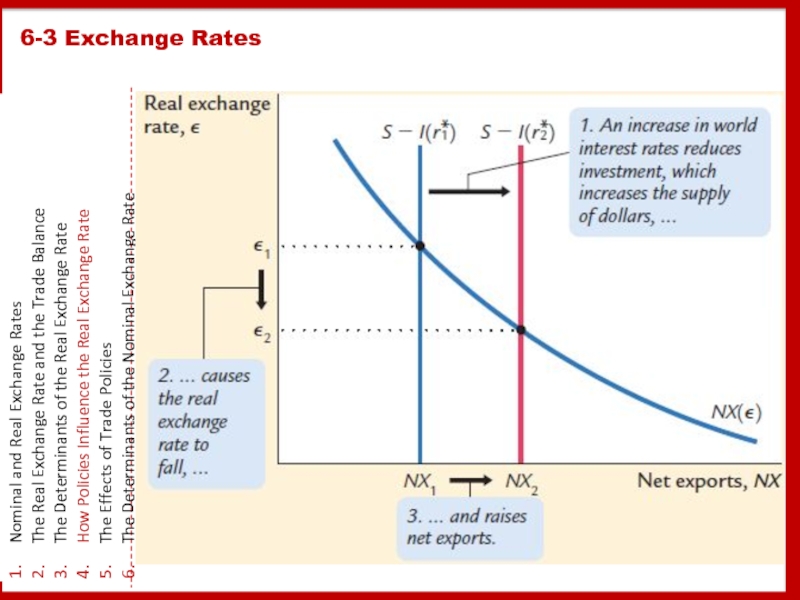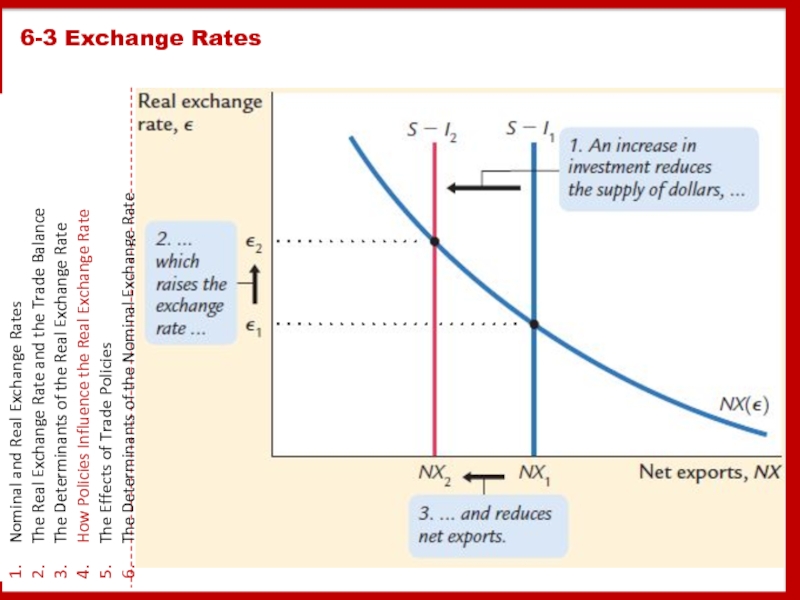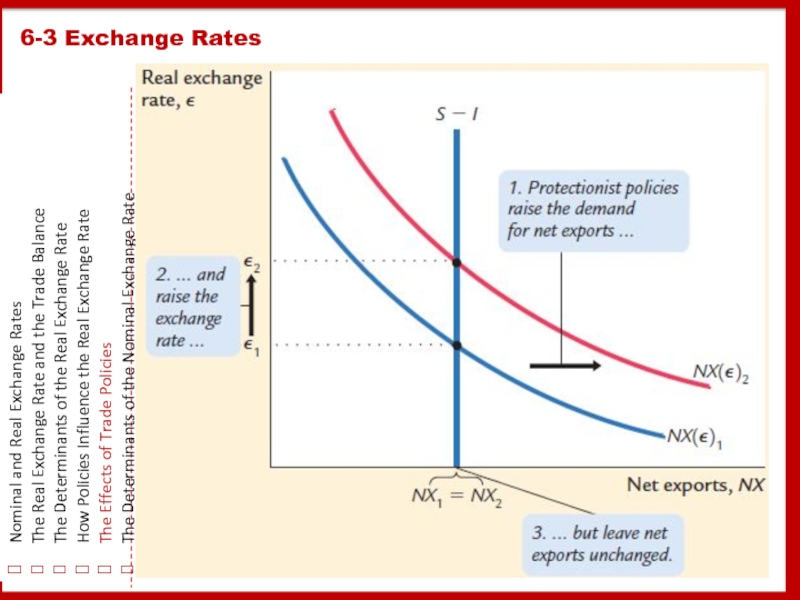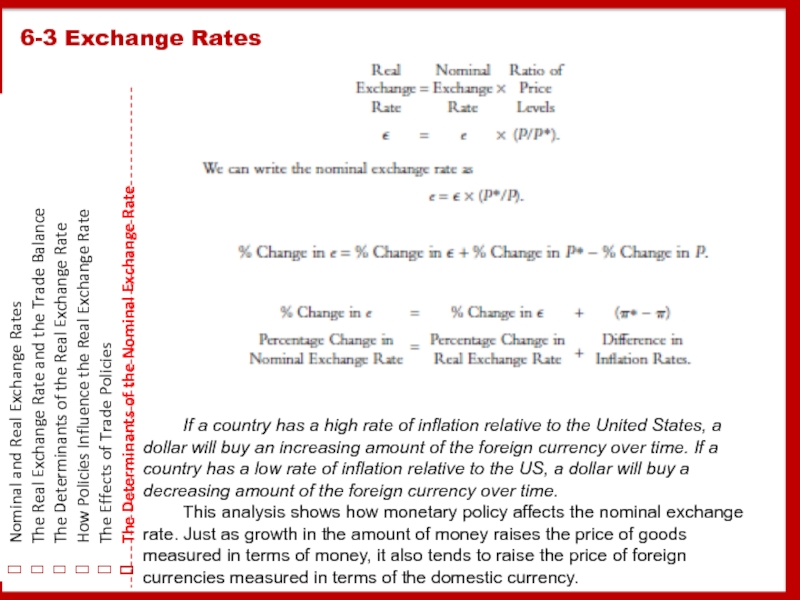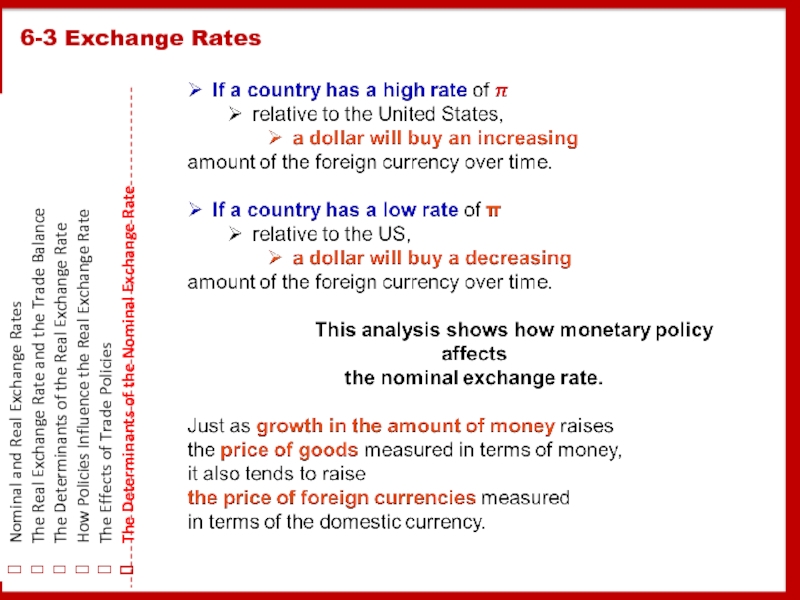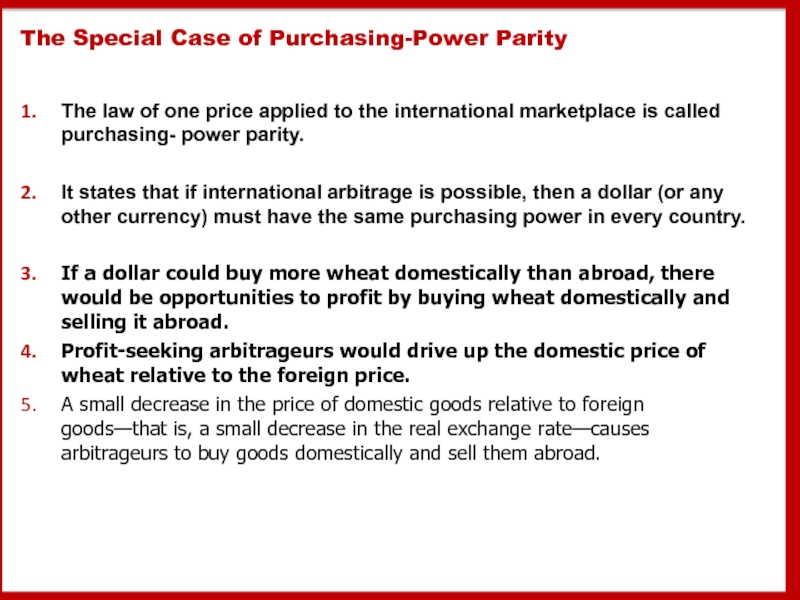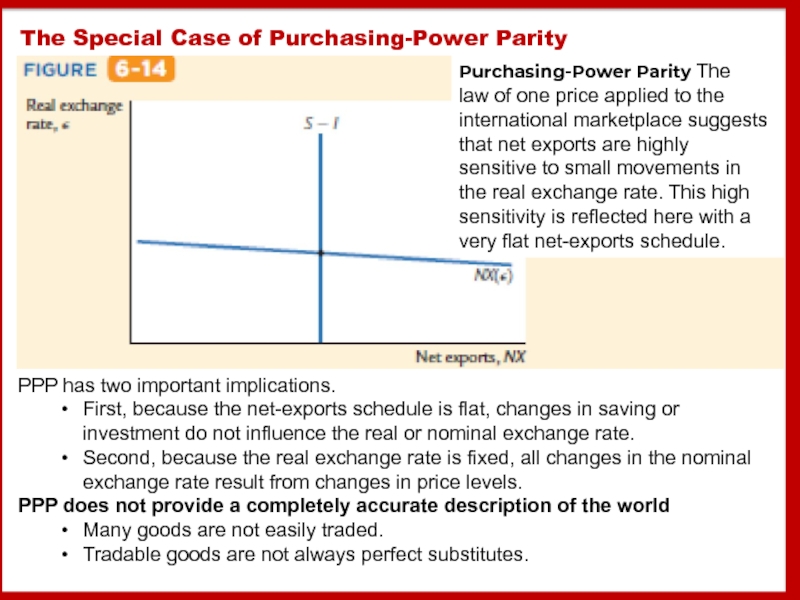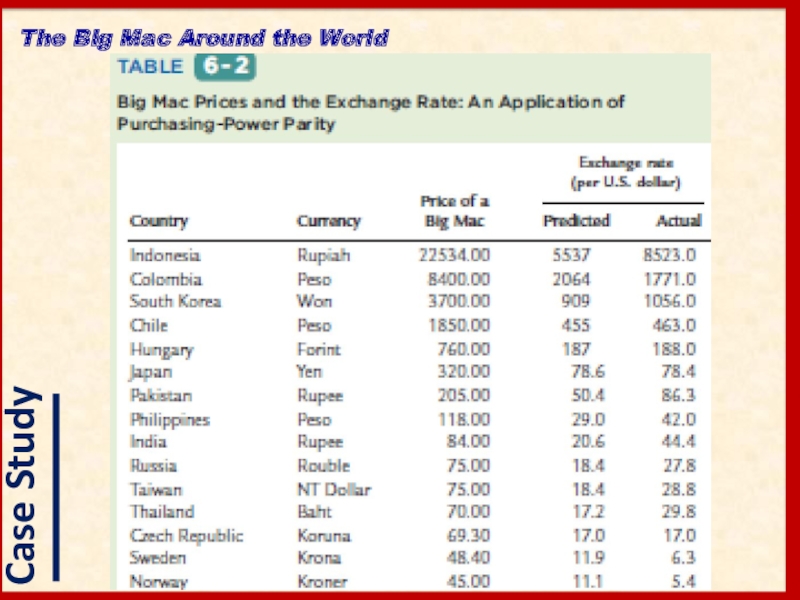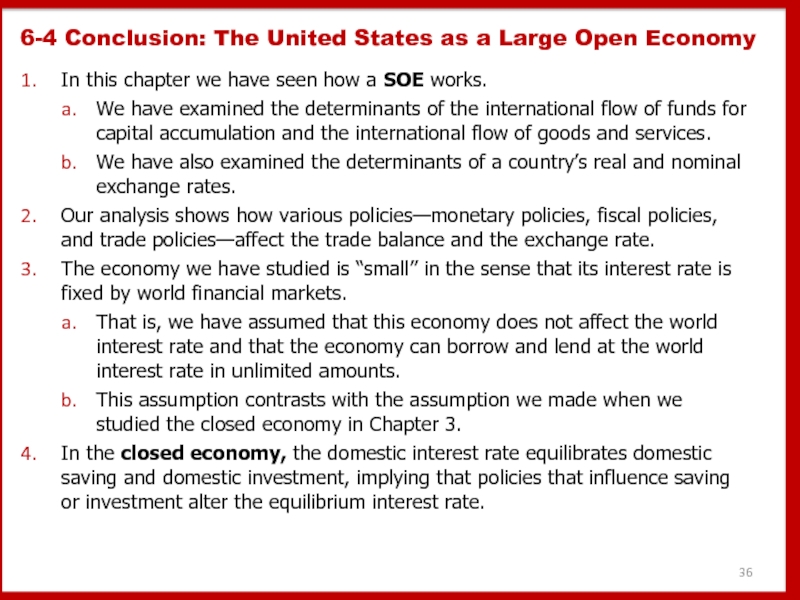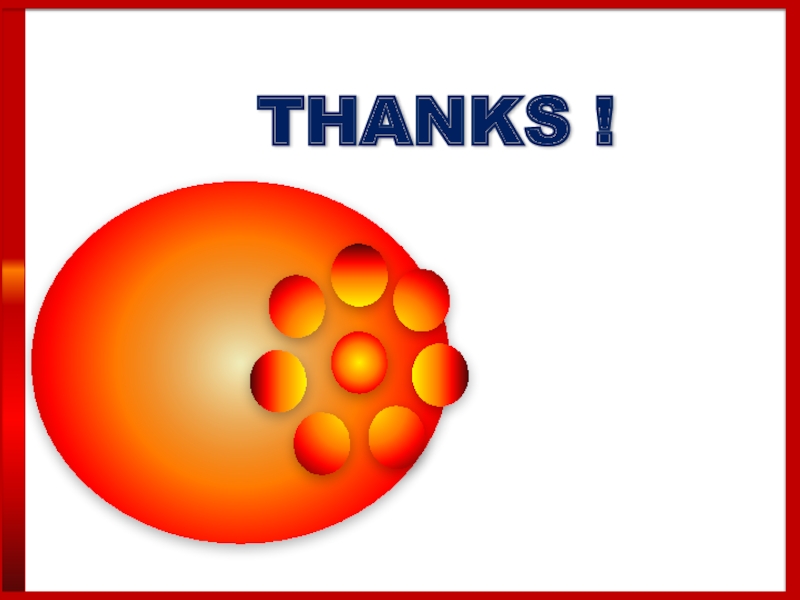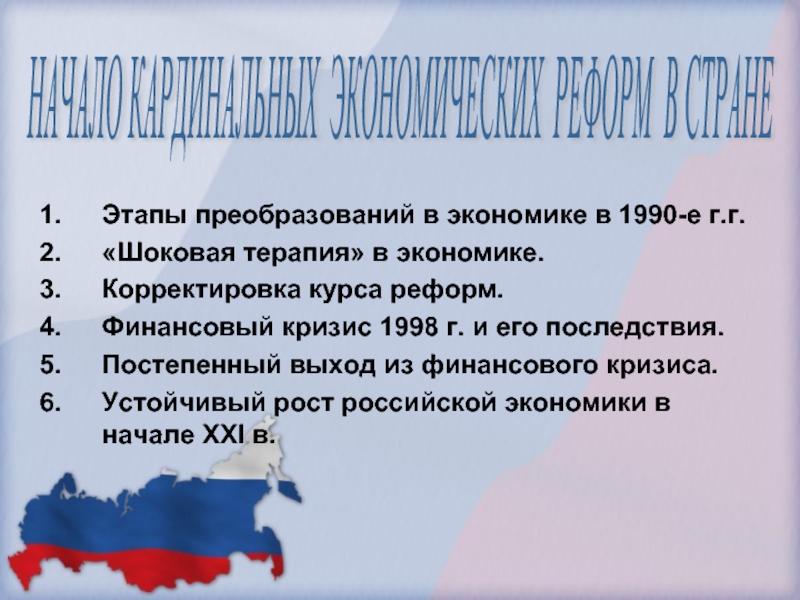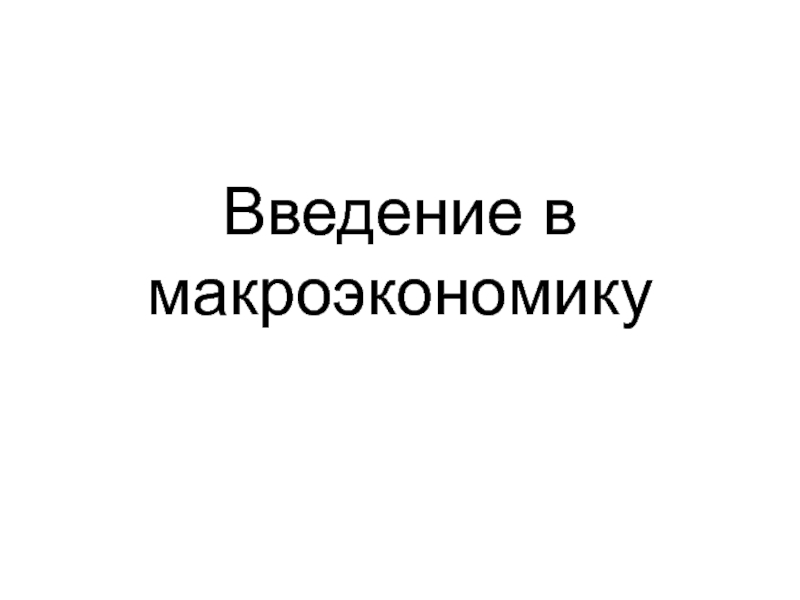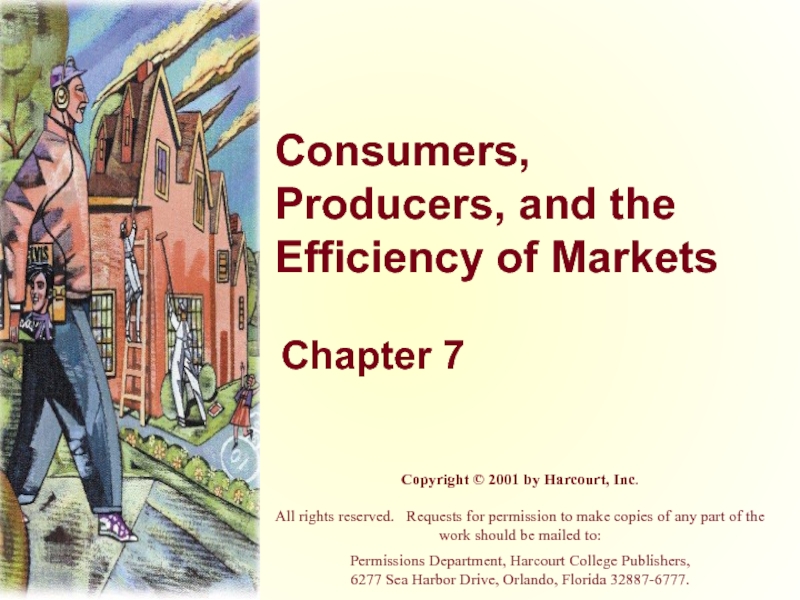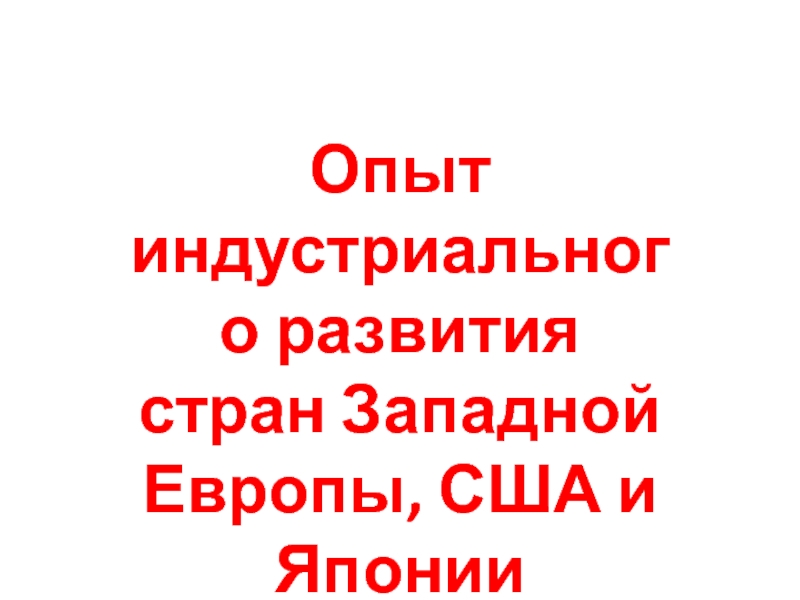6
- Главная
- Разное
- Дизайн
- Бизнес и предпринимательство
- Аналитика
- Образование
- Развлечения
- Красота и здоровье
- Финансы
- Государство
- Путешествия
- Спорт
- Недвижимость
- Армия
- Графика
- Культурология
- Еда и кулинария
- Лингвистика
- Английский язык
- Астрономия
- Алгебра
- Биология
- География
- Детские презентации
- Информатика
- История
- Литература
- Маркетинг
- Математика
- Медицина
- Менеджмент
- Музыка
- МХК
- Немецкий язык
- ОБЖ
- Обществознание
- Окружающий мир
- Педагогика
- Русский язык
- Технология
- Физика
- Философия
- Химия
- Шаблоны, картинки для презентаций
- Экология
- Экономика
- Юриспруденция
06 II. The open economy презентация
Содержание
- 1. 06 II. The open economy
- 2. No nation was ever ruined by trade.
- 4. Cd, consumption of domestic (d) G&S, ID,
- 5. 6-1 The International Flows of Capital and
- 6. 6-1 The International Flows of Capital and
- 7. 6-1 The International Flows of Capital and
- 8. USA sells goods & Japan pays 5000
- 9. A media report on a nation’s trade
- 10. A model of the international flows of
- 11. Residents of the SOE need never
- 12. 6-2 Saving and Investment in a Small
- 13. Assamptions The economy’s output Y is
- 14. 6-2 Saving and Investment in a Small
- 15. 6-2 Saving and Investment in a Small
- 16. 6-2 Saving and Investment in a Small
- 17. 6-2 Saving and Investment in a Small
- 18. The model of the OE shows that
- 20. The U.S. Trade Deficit
- 21. Why Doesn’t Capital Flow to Poor Countries?
- 22. The nominal exchange rate is the relative
- 23. 6-3 Exchange Rates Nominal and Real Exchange
- 24. 6-3 Exchange Rates Nominal and Real Exchange
- 25. 6-3 Exchange Rates Nominal and Real Exchange
- 26. 6-3 Exchange Rates Nominal and Real Exchange
- 27. 6-3 Exchange Rates Nominal and Real Exchange
- 28. 6-3 Exchange Rates Nominal and Real Exchange
- 29. 6-3 Exchange Rates Nominal and Real Exchange
- 30. 6-3 Exchange Rates Nominal and Real Exchange
- 31. 6-3 Exchange Rates Nominal and Real Exchange
- 32. 6-3 Exchange Rates Nominal and Real Exchange
- 33. The Special Case of Purchasing-Power Parity
- 34. The Special Case of Purchasing-Power Parity
- 35. The Big Mac Around the World
- 36. 6-4 Conclusion: The United States as a
Слайд 2No nation was ever ruined by trade.
—Benjamin Franklin
6-1 The International Flows
6-2 Saving and Investment in a Small Open Economy
6-3 Exchange Rates
6-4 Conclusion: The United States as a Large Open Economy
Слайд 4Cd, consumption of domestic (d) G&S,
ID, investment in d G&S,
Gd, Gnt
X, exports of d G&S
6-1 The International Flows of Capital and Goods
The Role of Net Exports
International Capital Flows and the Trade Balance
International Flows of Goods and Capital: An Example
Domestic spending on d G&S
Foreign spending on d G&S
Total domestic C,I,G
Net export
Слайд 56-1 The International Flows of Capital and Goods
The Role of
International Capital Flows and the Trade Balance
International Flows of Goods and Capital: An Example
If output exceeds domestic spending,
we export the difference.
Net exports are positive.
If output falls short of domestic spending,
we import the difference.
Net exports are negative.
Слайд 66-1 The International Flows of Capital and Goods
The Role of
International Capital Flows and the Trade Balance
International Flows of Goods and Capital: An Example
National saving
Trade balance
Net foreign investment or net
Capital outflow
If the net S-I is negative,
the economy is experiencing a capital inflow:
I exceeds S, and the economy is financing this extra I by borrowing from abroad.
Net S-I reflects the international flow of funds to finance capital accumulation.
S>I Trade surplus
S=I
S
Balanced trade
Trade deficit
Слайд 76-1 The International Flows of Capital and Goods
The Role of
International Capital Flows and the Trade Balance
International Flows of Goods and Capital: An Example
The national income accounts identity shows
that
the international flow of FUNDS to finance capital accumulation
and
the international flow of G&S
are two sides of the same coin.
Слайд 8USA sells goods & Japan pays 5000 yen
5,000 yen in
It is investment abroad
net capital outflow > 0,
Ex>Im, S>I
5000 yen spend for in Japan
net capital outflow = 0,
Ex= Im, S=I
5000 yen in the US bank
At the end , Ex – Im = S – I= NX
6-1 The International Flows of Capital and Goods
The Role of Net Exports
International Capital Flows and the Trade Balance
International Flows of Goods and Capital: An Example
Слайд 9A media report on a nation’s trade balance with a specific
For example,
Suppose the world has three countries:
The United States sells $100 billion in machine tools to Australia,
Australia sells $100 billion in wheat to China, and
China sells $100 billion in toys to the United States.
In this case,
the United States has a bilateral trade deficit with China,
China has a bilateral trade deficit with Australia, and
Australia has a bilateral trade deficit with the United States.
But each of the three nations has balanced trade overall because it has exported and imported $100 billion in goods.
The Irrelevance of Bilateral Trade Balances
S S=I, NX=0
Слайд 10A model of the international flows of capital and goods.
Because
CASE I
Small economy is a small part of the world market and can have only a negligible effect on the world r.
Perfect capital mobility means that residents of the country have full access to world financial markets.
The Gnt does not impede international borrowing or lending.
→ r in SOE = the world interest rate r∗
r = r∗.
6-2 Saving and Investment in a Small Open Economy
Capital Mobility and the World Interest Rate
Why Assume a Small Open Economy?
The Model
How Policies Influence the Trade Balance
Evaluating Economic Policy
Слайд 11Residents of the SOE need never
borrow at any interest rate
because they can always get a loan at r* from abroad.
lend at any interest rate < r∗
because they can always earn r* by lending abroad.
The r*determines the r in SOE.
CASE II
6-2 Saving and Investment in a Small Open Economy
Capital Mobility and the World Interest Rate
Why Assume a Small Open Economy?
The Model
How Policies Influence the Trade Balance
Evaluating Economic Policy
Слайд 126-2 Saving and Investment in a Small Open Economy
Capital Mobility
Why Assume a Small Open Economy?
The Model
How Policies Influence the Trade Balance
Evaluating Economic Policy
Слайд 13Assamptions
The economy’s output Y is fixed by the factors of production
Y = Y = F(K, L)
Consumption C is positively related to disposable income Y − T.
C = C(Y − T)
Investment I is negatively related to the real interest rate r.
I = I(r )
NX = (Y − C − G) − I
NX = S − I
6-2 Saving and Investment in a Small Open Economy
Capital Mobility and the World Interest Rate
Why Assume a Small Open Economy?
The Model
How Policies Influence the Trade Balance
Evaluating Economic Policy
Слайд 146-2 Saving and Investment in a Small Open Economy
Capital Mobility
Why Assume a Small Open Economy?
The Model
How Policies Influence the Trade Balance
Evaluating Economic Policy
Saving and Investment in a Small Open Economy
In a CE, the r adjusts to equilibrate S and I.
In a SOE, the r is determined in world financial markets.
The difference between S&I determines the trade balance.
Here there is a trade surplus, because at the r*, S exceeds I.
Слайд 156-2 Saving and Investment in a Small Open Economy
Capital Mobility
Why Assume a Small Open Economy?
The Model
How Policies Influence the Trade Balance
Evaluating Economic Policy
A Fiscal Expansion at Home in a Small Open Economy
An increase in government purchases or a reduction in taxes reduces national saving and thus shifts the saving schedule to the left, from S1 to S2.
The result is a trade deficit.
Слайд 166-2 Saving and Investment in a Small Open Economy
Capital Mobility
Why Assume a Small Open Economy?
The Model
How Policies Influence the Trade Balance
Evaluating Economic Policy
A Fiscal Expansion Abroad in a Small Open Economy
A fiscal expansion in a foreign economy large enough to influence world S&I raises the r* from r1 * to r2 *.
The higher r* reduces I in this SOE, causing a trade surplus.
Слайд 176-2 Saving and Investment in a Small Open Economy
Capital Mobility
Why Assume a Small Open Economy?
The Model
How Policies Influence the Trade Balance
Evaluating Economic Policy
A Shift in the Investment Schedule in a Small Open Economy
An outward shift in the I schedule from I(r)1 to I(r)2 increases the amount of I at the r*.
As a result, I now exceeds S, which means the economy is borrowing from abroad and running a trade deficit.
Слайд 18The model of the OE shows that
the flow of G&S
the international flow of funds.
Policies – S ↓, I ↑ → TD
Policies – S ↑, I ↓ → TS
Evaluating economic policies and their impact on the open economy is a frequent topic of debate among economists and policymakers.
6-2 Saving and Investment in a Small Open Economy
Capital Mobility and the World Interest Rate
Why Assume a Small Open Economy?
The Model
How Policies Influence the Trade Balance
Evaluating Economic Policy
Слайд 19
6-2 Saving and Investment in a Small Open Economy
Capital Mobility
Why Assume a Small Open Economy?
The Model
How Policies Influence the Trade Balance
Evaluating Economic Policy
TD – is it a problem?
not as a problem in itself, but perhaps as a symptom of a problem.
could be a reflection of low saving.
In a CE, low S leads to low I & a smaller future capital stock.
In an OE, low S leads to a TD and a growing foreign debt.
In both cases, high current consumption leads to lower future C,
implying that future generations bear the burden of low national S.
a sign of economic development.
For example, South Korea ran large trade deficits throughout the 1970s, and it became one of the success stories of economic growth.
One must look at the underlying causes of the international flows
Слайд 22The nominal exchange rate is the relative price of the currencies
For example,
if the exchange rate between $ and YEN is 80 yen per dollar, then
A Japanese who wants to obtain $ would pay 80 yen for each dollar he bought.
An American who wants to obtain YEN would get 80 yen for each $ he paid.
When people refer to “the exchange rate’’ between two countries, they usually mean the nominal exchange rate
The real exchange rate is the relative price of the goods of two countries.
It is the rate at which we can trade the goods of one country for the goods of another.
It is sometimes called the terms of trade.
6-3 Exchange Rates
Nominal and Real Exchange Rates
The Real Exchange Rate and the Trade Balance
The Determinants of the Real Exchange Rate
How Policies Influence the Real Exchange Rate
The Effects of Trade Policies
The Determinants of the Nominal Exchange Rate
Слайд 236-3 Exchange Rates
Nominal and Real Exchange Rates
The Real Exchange Rate
The Determinants of the Real Exchange Rate
How Policies Influence the Real Exchange Rate
The Effects of Trade Policies
The Determinants of the Nominal Exchange Rate
Слайд 246-3 Exchange Rates
Nominal and Real Exchange Rates
The Real Exchange Rate
The Determinants of the Real Exchange Rate
How Policies Influence the Real Exchange Rate
The Effects of Trade Policies
The Determinants of the Nominal Exchange Rate
If the ϵ is high,
foreign goods are relatively cheap, and
domestic goods are relatively expensive.
If the ϵ is low,
foreign goods are relatively expensive,
and domestic goods are relatively cheap.
Слайд 256-3 Exchange Rates
Nominal and Real Exchange Rates
The Real Exchange Rate
The Determinants of the Real Exchange Rate
How Policies Influence the Real Exchange Rate
The Effects of Trade Policies
The Determinants of the Nominal Exchange Rate
Net Exports and the Real Exchange Rate
The figure shows the relationship between the ϵ and NX:
the lower the ϵ, the less expensive are d.goods relative to f.goods, and thus the greater are our NX.
Note that a portion of the horizontal axis measures negative values of NX: because Im can exceed Ex, NX can be less than 0.
Слайд 266-3 Exchange Rates
Nominal and Real Exchange Rates
The Real Exchange Rate
The Determinants of the Real Exchange Rate
How Policies Influence the Real Exchange Rate
The Effects of Trade Policies
The Determinants of the Nominal Exchange Rate
How the Real Exchange Rate Is Determined
The ϵ is determined by the intersection of the vertical line representing S – I and the down ward sloping NX schedule.
At this intersection:
the quantity of $s supplied for the flow of capital abroad =
the quantity of $s demanded for the NX of G&S.
Слайд 276-3 Exchange Rates
Nominal and Real Exchange Rates
The Real Exchange Rate
The Determinants of the Real Exchange Rate
How Policies Influence the Real Exchange Rate
The Effects of Trade Policies
The Determinants of the Nominal Exchange Rate
Слайд 286-3 Exchange Rates
Nominal and Real Exchange Rates
The Real Exchange Rate
The Determinants of the Real Exchange Rate
How Policies Influence the Real Exchange Rate
The Effects of Trade Policies
The Determinants of the Nominal Exchange Rate
Слайд 296-3 Exchange Rates
Nominal and Real Exchange Rates
The Real Exchange Rate
The Determinants of the Real Exchange Rate
How Policies Influence the Real Exchange Rate
The Effects of Trade Policies
The Determinants of the Nominal Exchange Rate
Слайд 306-3 Exchange Rates
Nominal and Real Exchange Rates
The Real Exchange Rate
The Determinants of the Real Exchange Rate
How Policies Influence the Real Exchange Rate
The Effects of Trade Policies
The Determinants of the Nominal Exchange Rate
Слайд 316-3 Exchange Rates
Nominal and Real Exchange Rates
The Real Exchange Rate
The Determinants of the Real Exchange Rate
How Policies Influence the Real Exchange Rate
The Effects of Trade Policies
The Determinants of the Nominal Exchange Rate
If a country has a high rate of inflation relative to the United States, a dollar will buy an increasing amount of the foreign currency over time. If a country has a low rate of inflation relative to the US, a dollar will buy a decreasing amount of the foreign currency over time.
This analysis shows how monetary policy affects the nominal exchange rate. Just as growth in the amount of money raises the price of goods measured in terms of money, it also tends to raise the price of foreign currencies measured in terms of the domestic currency.
Слайд 326-3 Exchange Rates
Nominal and Real Exchange Rates
The Real Exchange Rate
The Determinants of the Real Exchange Rate
How Policies Influence the Real Exchange Rate
The Effects of Trade Policies
The Determinants of the Nominal Exchange Rate
Слайд 33The Special Case of Purchasing-Power Parity
The law of one price
It states that if international arbitrage is possible, then a dollar (or any other currency) must have the same purchasing power in every country.
If a dollar could buy more wheat domestically than abroad, there would be opportunities to profit by buying wheat domestically and selling it abroad.
Profit-seeking arbitrageurs would drive up the domestic price of wheat relative to the foreign price.
A small decrease in the price of domestic goods relative to foreign goods—that is, a small decrease in the real exchange rate—causes arbitrageurs to buy goods domestically and sell them abroad.
Слайд 34The Special Case of Purchasing-Power Parity
PPP has two important implications.
First, because the net-exports schedule is flat, changes in saving or investment do not influence the real or nominal exchange rate.
Second, because the real exchange rate is fixed, all changes in the nominal exchange rate result from changes in price levels.
PPP does not provide a completely accurate description of the world
Many goods are not easily traded.
Tradable goods are not always perfect substitutes.
Purchasing-Power Parity The
law of one price applied to the
international marketplace suggests
that net exports are highly
sensitive to small movements in
the real exchange rate. This high
sensitivity is reflected here with a
very flat net-exports schedule.
Слайд 366-4 Conclusion: The United States as a Large Open Economy
In
We have examined the determinants of the international flow of funds for capital accumulation and the international flow of goods and services.
We have also examined the determinants of a country’s real and nominal exchange rates.
Our analysis shows how various policies—monetary policies, fiscal policies, and trade policies—affect the trade balance and the exchange rate.
The economy we have studied is “small’’ in the sense that its interest rate is fixed by world financial markets.
That is, we have assumed that this economy does not affect the world interest rate and that the economy can borrow and lend at the world interest rate in unlimited amounts.
This assumption contrasts with the assumption we made when we studied the closed economy in Chapter 3.
In the closed economy, the domestic interest rate equilibrates domestic saving and domestic investment, implying that policies that influence saving or investment alter the equilibrium interest rate.
